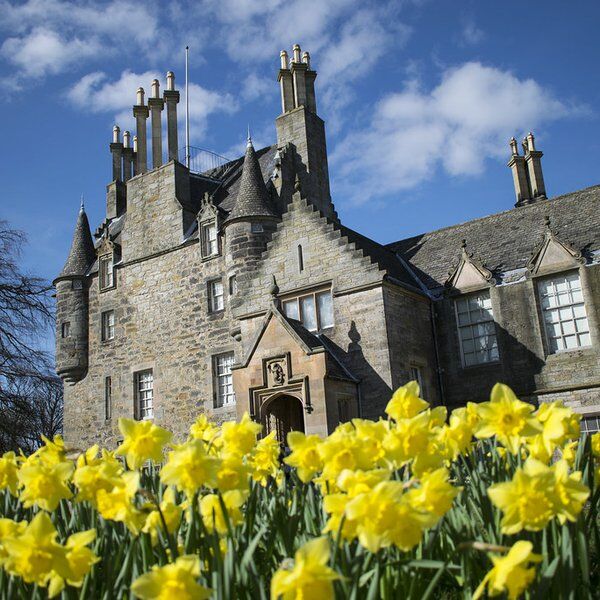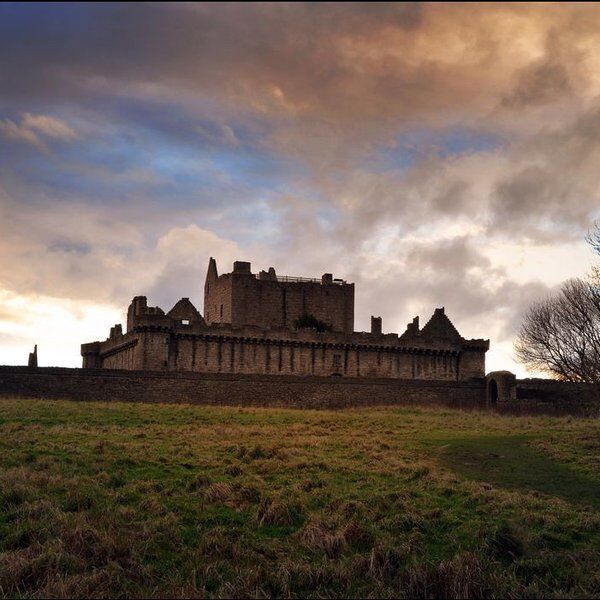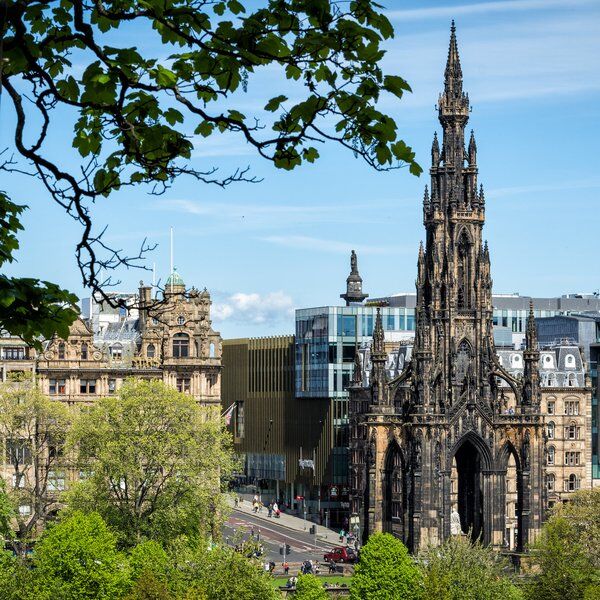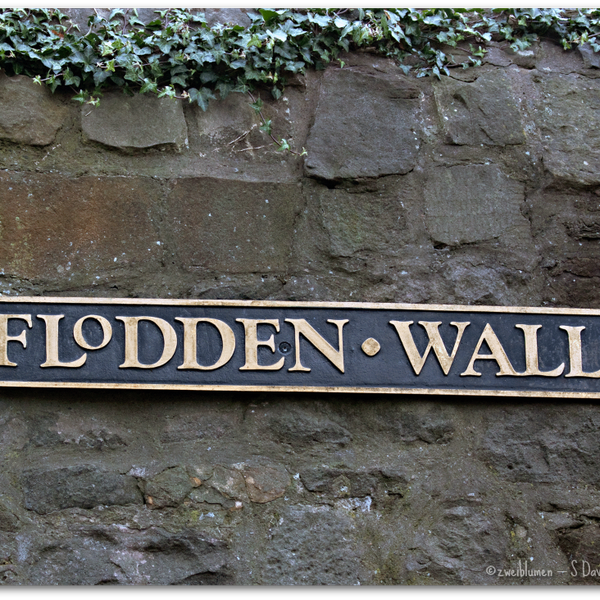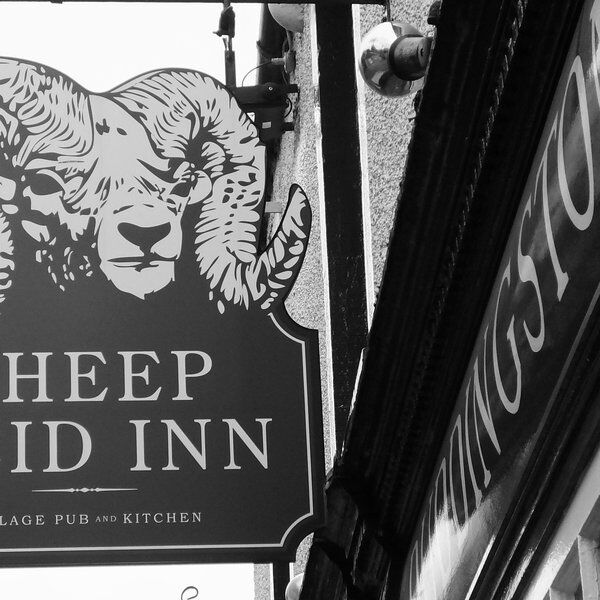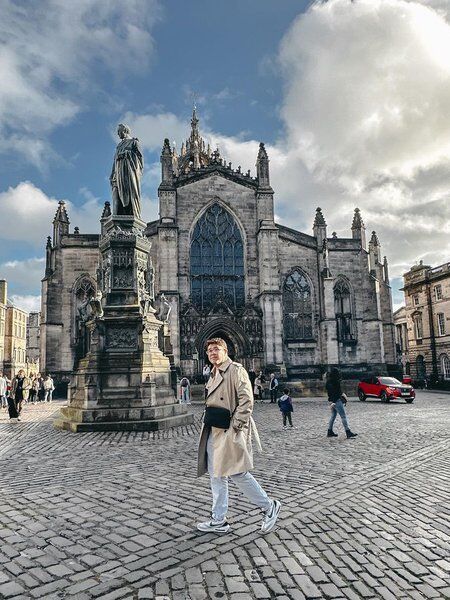
About St. Giles’ Cathedral
The founding of St Giles’ Cathedral has been attributed to King David I, King of Scotland, in 1124.
The original Romanesque building, of which barely a few fragments remain, was replaced by the current structure, in the 1300s. This was then enlarged gradually up until the early 16th century.
Today, situated on the outskirts of Edinburgh along the famous Royal Mile, St Giles’ Cathedral proudly pre-dates most of the Old Town around it.
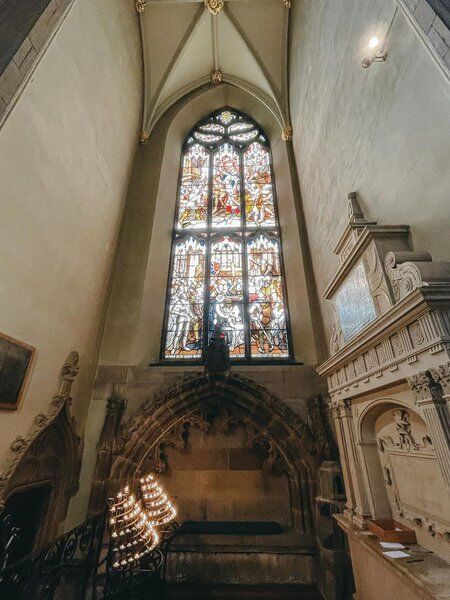
Who is St Giles?
According to legend, St Giles had been a Greek hermit from the Seventh Century. Living in the forests near Nîmes, in southern France, his only companion had been a tame deer.
One day whilst out hunting, the King of the Visigoths, shot at the deer. But instead the arrow had pierced Giles’ hand as he reached out to protect the deer.
Impressed by the holy man, the King eventually persuaded him to become the abbot of a monastery, which had been founded in his name.
Giles was subsequently canonised and became the patron saint of lepers, nursing mothers, and the lame.
Today, many churches are dedicated to St Giles.

The Birth of Presbyterianism
John Cox was a Scottish priest who converted to Protestantism in the 1540s and subsequently went into hiding where he befriended John Calvin, the French reformer.
After returning to Scotland in 1559, Cox marched an army of followers into St Giles’ Cathedral, preaching there for the first time. Within the week he became the minister of St Giles’, and the church became protestant.
The following year in 1560, despite still having a Catholic monarch, Mary Queen of Scots, the Scottish Parliament abolished papal authority. Scotland was declared a Protestant country and 400 years of Catholicism at St Giles’ was officially ended.
After the Reformation, St Giles’ was adapted to serve various congregations, function as a prison, and form a meeting place for the Scottish Parliament. Its stained-glass windows were also removed and any old church silver was melted down and sold, to fund its redecoration.
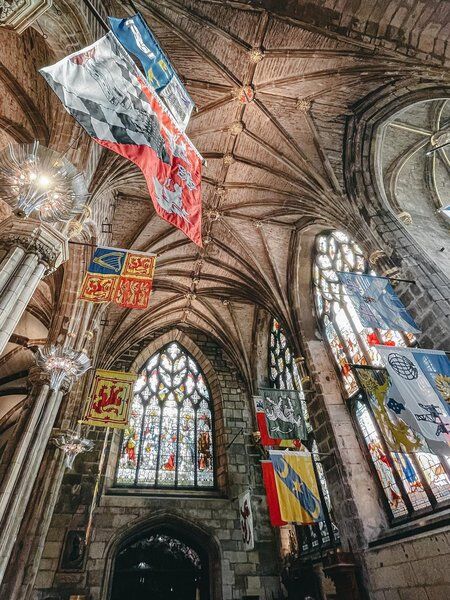
Four Churches at St Giles' Cathedral
After a 16th Century population boom, Edinburgh’s town council split the Scottish capital in 1584, into four parishes each with their own church. By 1699, St Giles’ interior – using a number of stone partitions – had been transformed into four completely separate churches.
At the time, the High Kirk – the largest and most important of the four churches – occupied the chancel of St Giles’. The Auld Kirk was formed within the crossing and part of the nave. At the southwest end was the Tolbooth Kirk. And at the northwest end was Haddo’s Hole Kirk, which was accessed via an arched doorway that has become a WWII memorial.
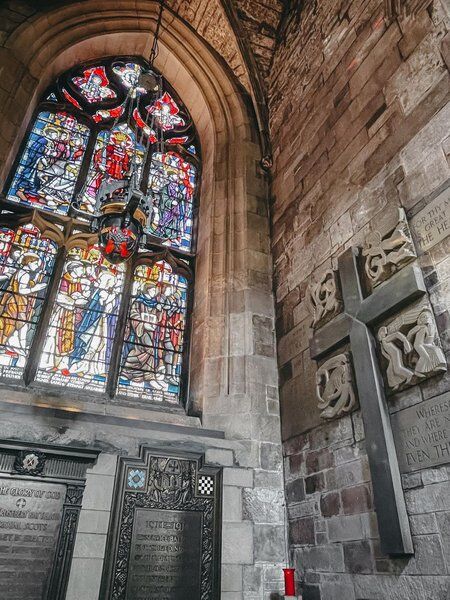
Typically, people were supposed to attend the parish church assigned them by the town council. But many went to the church that had a minister who preached their preferred style of sermon.
St Giles’ split interior existed for almost 200 years until a great restoration scheme in the 1870 and 1880s unified the Cathedral once more.

Restoring St Giles’ Cathedral
William Burn Restoration
Architect William Burn was commissioned in 1826, by Edinburgh’s Lord Provost to draw up plans to repair St Giles’ exterior and modernise the interior.
When designing his remodel, Burn used previous plans drawn up by renowned Scottish architect Archibald Elliot, who had died before he could implicate them in 1823.
These plans featured the insertion of iron tie bars into the stonework, solving a leaning wall issue and also included a controversial move to demolish the southwest chapels.
Other aspects of the restoration included repairing all the roofs; raising the height of the nave to match the chancel; widening the aisle where the Church of Scotland’s General Assembly met; and encasing the entire building in polished ashlar sandstone.
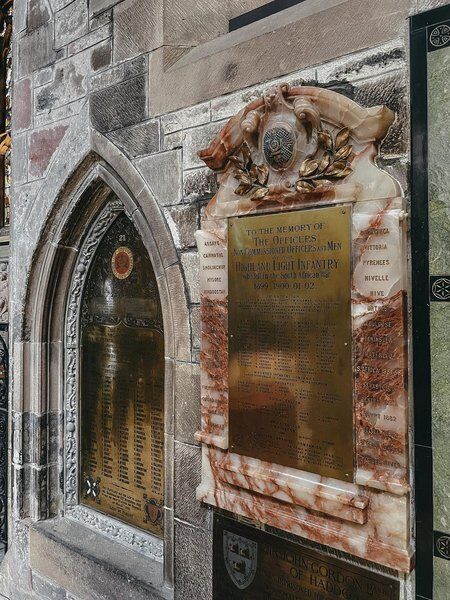
William Chambers Restoration
William Chambers became the Lord Provost of Edinburgh in 1865. Two years later he had an overwhelming desire to demolish the Cathedral’s internal walls, transforming it into ‘Scotland’s Westminster Abbey’.
Initially, Chamber’s vision was met with much skepticism, and he had to appeal to a multitude of authorities for permission. Before the project was complete in 1883, he also had to perform extensive fundraising and pay out generously from his own pocket.
Despite the initial wariness, after plans were approved in 1872 and work commenced, the Chambers Restoration had become rather popular. Architect William Hay, who is commemorated by a plaque in the Cathedral, testified to this when he noted that crowds of people were venturing from America, England, and beyond to admire their efforts. Queen Victoria herself even made a £200 donation to the appeal fund.
As part of the Chambers Reconstruction fire damage from English raids centuries before were scrubbed from the pillars; the walls were plastered; the floors were adorned with decorative tiles; and St Giles’ Cathedral was returned to its former, unified glory.

St Giles’ Cathedral Today
Today, the Cathedral’s popularity continues, and it is now a popular tourist attraction, showcasing 900 years of history to anyone who steps within its walls.
Religious services are held routinely, and it also performs as a cultural hub hosting a range of events including organ recitals.
Guided tours are available from the Cathedral’s many volunteers, who are happy to answer all questions about St Giles’.

Interested in finding more places like this? Why not try one of our Treasure Hunts in Edinburgh - untangle cryptic clues as a team, as you are taken on a journey to the most unique, unusual and bizarre corners of Edinburgh!









